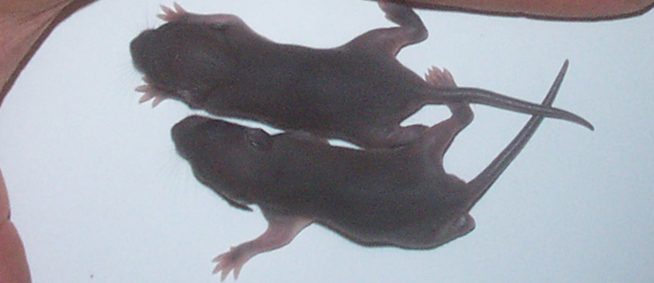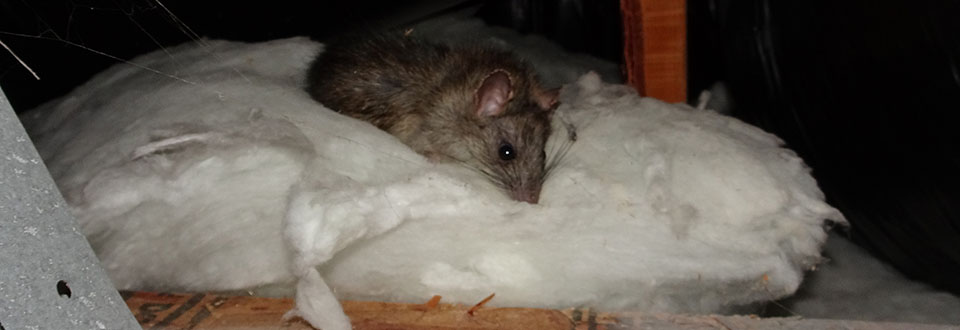One of the biggest reasons behind a rat entering your home or commercial
property, is to find a place that they can give birth to their young,
and then take care of them for a while. Every pregnant female rat out
there is looking for a place to call her home for a while, and that's
often what encourages them to come inside in the first place. That and
the fact that you keep leaving food around for them to eat, of course.
That's why there are so many rats in more residential areas these days.

Before you make your move removing ANY wild animal in your home, rats, raccoons, opossums, skunks, bats, etc., you should always check the legalities in your area. It is illegal to kill certain animals in certain states, and with bats in particular, it is illegal to try and move them while they are nesting, or during the nesting / maternity periods. These are not things you will generally need to take into consideration with vermin such as rats, but the babies are still something you'll need to think about, on top of everything else.
If you have learned where the baby rats are, either using a professional wildlife control expert to help you, or using your own eyes and ears, you can try capturing them, wearing gloves, and then using them to work as bait in order to catch the mother. This only works if you go through the process of sealing up all the damage, cracks and holes that they are using to gain entrance, however. Without that, your hard work will be fruitless. The rats, and other animals alongside it, will soon come back again.
Although it's not a pleasant thought, using exclusion methods and waiting for the young to become old enough to leave of their own accord is the best advice we could give you. There's a good chance you won't be able to find the babies on their own anyway, and they reach maturity in around five weeks or so - by that point, they will be old enough to leave the nest, and have babies of their own too!
Rats can have up to five litters per year in ideal conditions, and ideal conditions are places such as your home, and busy towns. All busy towns have thriving rat communities within them these days, and a 2015 study provide that 18% of all homes in Philadelphia alone showed serious signs of an infestation of rodents. By sealing up the holes and cracks, and using one “exclusion door” as your rat prevention of choice, you are taking a natural and humane approach to getting rid of the vermin you really don't want in your home - mothers, fathers, and babies included!

You might think that since your attic is warm, full of soft insulation, and relatively quiet, rats would readily seek it out for shelter, and you'd be right. Your attic is the perfect hiding place for a rat, and it's a very common area for rats and other rodents to make their home.
There's a lot of chewable material in the average attic, which is an essential aspect of a rat’s survival. They continually chew all manner of materials in order to wear their teeth down. If they don't, their teeth grow so long that they lose the ability to close their mouths properly.
Eventually, it stops them from being able to eat or drink and they die. Wooden rafters, boxes, pipes, and cables are all fair game for a rat. Pipes and cables are an obvious risk, with the potential to cause both water and fire damage, and nobody wants a fried rat in the attic.
Considering their never-ending appetite for inedible materials, looking for gnaw marks and shredded materials scattered in your attic is a good way to determine habitation.
A few materials that rats can chew their way through include:
- Wood
- Plastic
- Thin Aluminum
- Lead Sheeting
- Asbestos
- Brick
You might have heard scurrying up in the eves or even seen a couple of rats darting around behind boxes, and assumed that only a couple got in. One of the problems with rats is that they are extremely prolific breeders. One female rat can produce up to ten or more litters every year, each litter containing 10-12 rats. It doesn't take a math wiz to work out that those numbers can get out of control very quickly.
Despite the potential tidal wave of rats, it's important not to panic. While the rats are up in your attic, they don't have much reason to go elsewhere. If they have a safe space to nest, then the last thing you want to do is to go in with all guns blazing and scare them into scattering into the rest of your house.
Rat nests are typically well concealed, and will more often than not make use of soft materials like insulation. Rat pups are weaned for 21 days and they reach sexual maturity anywhere from 5 to 10 weeks old, so if you find evidence of a rat infestation or even a nest, it's within your best interest to call a professional immediately. While you may be able to coax adult rats into a trap, without directly locating the nest you won't be able to remove the babies.
Under no circumstances should you use poison; it creates more problems through a lack of predictability. You never know where the dead rat is going to end up, and if there is a family, the babies will simply die without the care of their mother. This makes for even more dead rats that are even harder to locate, and a nasty odor.
If you opt for the DIY approach, make sure to use trapping methods that are appropriate for rats. Mousetraps are not sufficient, and if you're looking to tackle multiple rats, the best method is a live trap that can confine multiple rats at once. Then, when all the adult rats are trapped, you have the choice of disposal or release.








